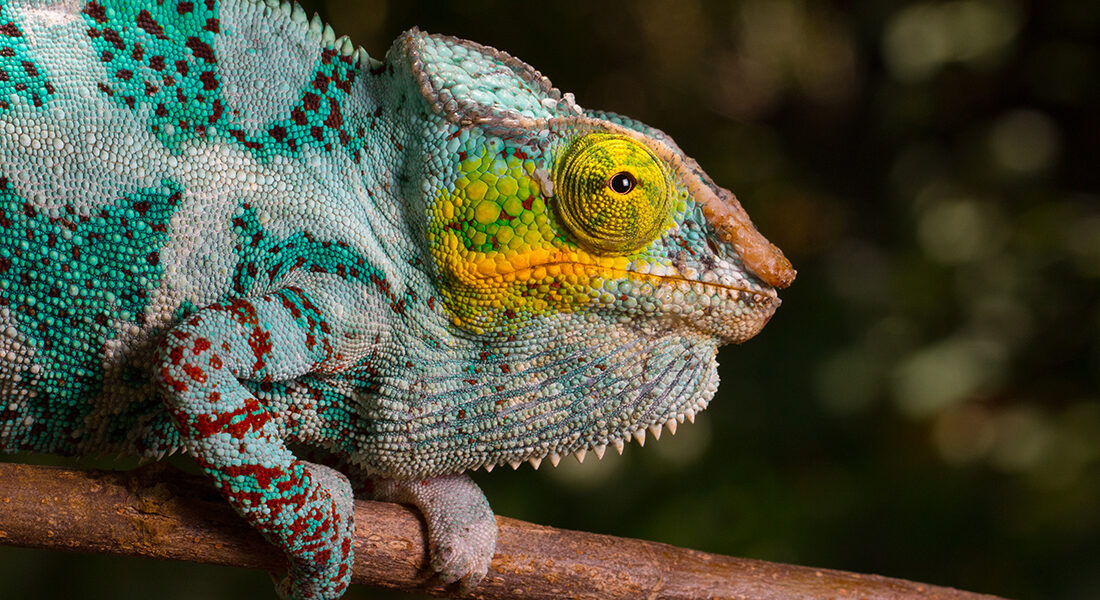Genome of the panther chameleon decoded
In recent decades, genetic research has developed rapidly. Since 2009, the so-called high fidelity (HiFi) Pacbio sequencing method has been available for sequencing genomes. Nevertheless, relatively little is being done in the reptile field. There are only about a hundred so-called reference genomes for reptiles, and none at all for chameleons. Scientists from China have now published a reference genome for the panther chameleon (Furcifer pardalis).
For the analysis, a 5-year-old male captive panther chameleon was killed using isoflurane and then dissected. Different tissues were frozen in liquid nitrogen. Skeletal muscle was used for short genome DNA sequencing and HI-C sequencing. Liver was used for HiFi sequencing. RNA from heart, liver, spleen, testis, lung, kidney, and skin were used for transcriptome sequencing.
The genome size of the panther chameleon from the K-mer analysis is 1.61 gigabase pairs (Gbp), containing only 22 so-called contigs, sets of overlapping DNA. The karyotype contains 11 chromosomes, each consisting of one to four contigs. Ten out of eleven chromosomes have repeat sequences (TAACCC). BUSCO analysis demonstrated a high completeness of the genome. The genome can be viewed in the NCBI BioProject under the number PRJNA974816 and in ScienceDataBank.
Efficient and highly continuous chromosome-level genome assembly of the first chameleon genome
Hongxin Xie, Zixuan Chen, Shuai Pang, Weiguo Du
Genome Biology and Evolution 131, 2023
DOI: 10.1093/gbe/evad131
Picture: Alex Laube
Science


One comment
Comments are closed.